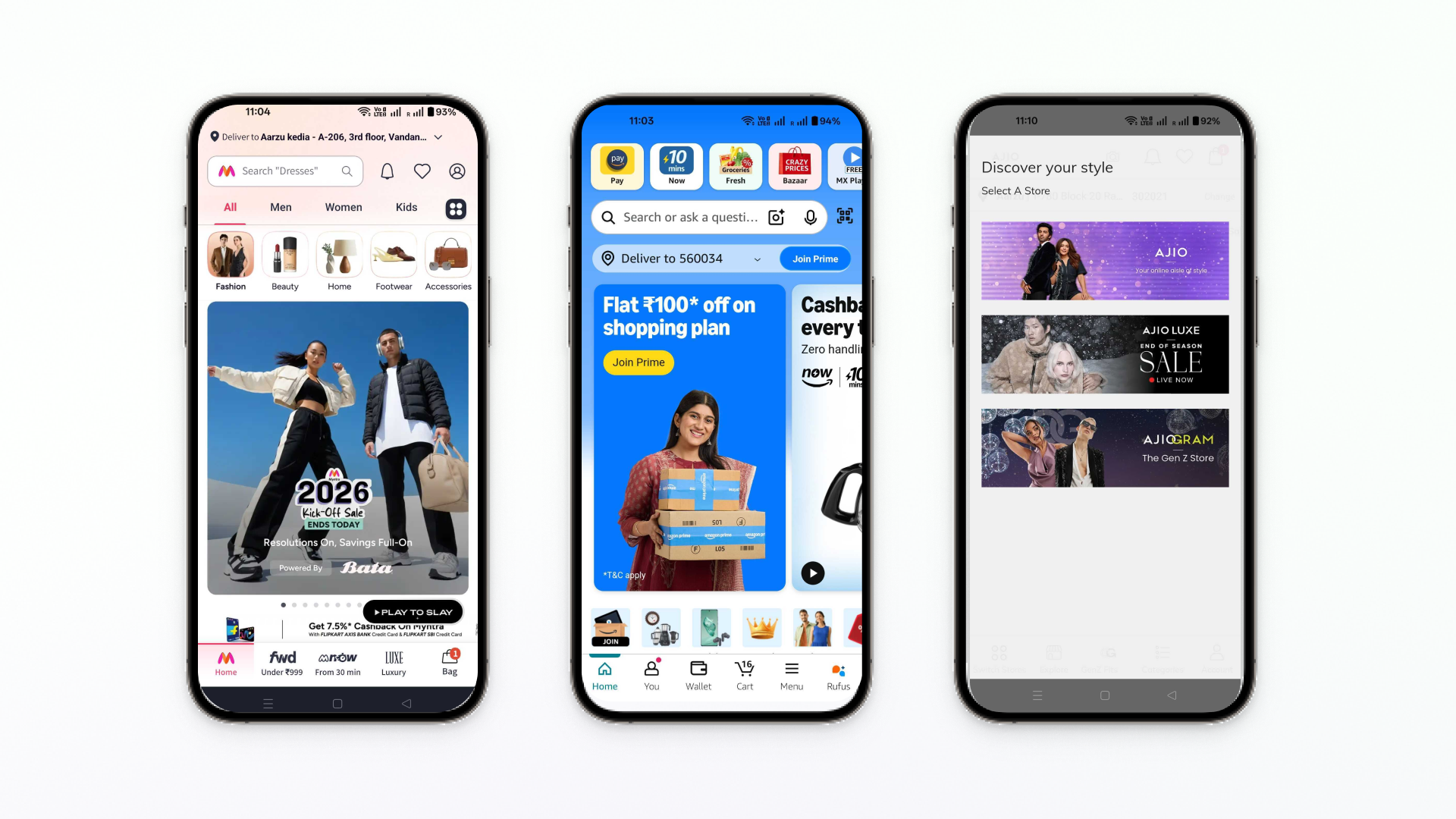We use cookies to ensure you get the best experience on our website. For more details, refer to our cookie policy and privacy policy.
January 24, 2025
5
minutes
Contextual Nudges in Mobile Apps
Discover how to optimize user journeys with contextual nudges in mobile apps by targeting the right user with the right context at the right time.

Ananya Vairavarajan

Imagine a scenario where the necessary features appear at the right time, exactly when you need your users to see them. It may sound like magic, but it's the power of contextual nudges.
In this blog post, we will explore various scenarios where contextual nudges can be applied at different points during the user journey.
What are contextual nudges?
Contextual nudges engage your users when they’re using the mobile app, with the right context at the right time. They guide users to the next action point.
For example, when unveiling a new customer-centric feature, contextual nudges come to the rescue, educating users about the new feature, and ultimately boosting conversions, engagement, and overall user experience.
Benefits of contextual nudges
- Streamline the user onboarding process.
- Boost feature adoption by delivering timely and targeted information to users.
- Increase user engagement and encourage the users to use it repeatedly.
- Drive higher revenues from your existing users.
Let’s dive into the list of use cases for contextual nudges on how they can be implemented throughout various stages of the user journey.
Contextual nudges in user onboarding
Flipkart uses coachmarks to onboard new users
The coachmark is used to introduce its new users to the core functionality as the user goes through making a purchase for the first time. By highlighting these core features, it would lead to quick activation and subsequently long-term retention.

Google Pay guides new users to aha moments
Google Pay provides an excellent example of this strategy by incorporating tooltips that educate new users on how to use two critical features - making payments to contacts via a search and scanning a QR code. This ensures that new users are aware of these features leading to quick activation.

Contextual nudges for feature adoption
Jar uses Spotlight to highlight GoldX
Jar uses a spotlight to introduce users to their newly launched feature, GoldX to improve the adoption of the feature and complete the respective action. This is targeted to the users landing on the homepage on an app launch on how they can save and earn better with GoldX.

SonyLiv highlights the 'MyList' feature
In-app blinkers are used in SonyLiv to highlight the “My List” feature and make the users adopt that to add their favorite movies and TV shows. This is shown to a particular cohort of users who have seen similar kind of movies.

Contextual nudges for user engagement
Blinkit uses PiP videos to share new deals
To introduce daily active users to new deals (of that particular day), Blinkit created an engaging video that was shared with its user base. While the video is playing, users still have access to the screen and can move it around, expand it, or dismiss it as they please.

SonyLiv uses a slider for more exposure
When SonyLiv launched Rocket Boys Season 2, they wanted to contextually nudge more users to start watching. In addition to placing it front and center on the homepage, they also configured a slider to draw user attention. This campaign was made highly relevant by only targeting users who’ve watched Season 1 in the past but had still not started watching any episode of Season 2.

Contextual nudges for monetization
Picsart uses bottom tabs to convert users to paid
By using static bottom tabs, Picsart ensures that the promotion of its premium model is prominently displayed at the bottom of the app's interface. This placement targets the users who are in free mode to be aware of the premium features and benefits offered.

HealthifyMe uses real-time offers to drive subscriptions
In the HealthifyMe app, for users who’ve hit the purchase page multiple times before but have not yet converted, a native banner for this user cohort shows up which takes them to a stories carousel. Each story is embedded with a CTA that takes the user to a purchase page.
.gif)
Why is it difficult to build contextual nudges in-house?
Engineering bandwidth is limited
The demands on engineering teams are high, as they are typically responsible for core product development, bug fixes, infrastructure maintenance, and other critical tasks.
This scarcity of engineering bandwidth can hinder the timely implementation of contextual nudges, slowing down the progress and impact of your in-app engagement initiatives.
Experimenting with multiple flows is a challenge
Testing different contextual nudges to determine their impact on key metrics is crucial. For example, you may experiment with a subtle nudge that highlights the "Send Money" feature for new users to see its impact on the metrics.
If not, you need to explore alternative approaches. But time constraints may limit the ability to test multiple flows.
Plotline enables B2C product and growth teams to build contextual nudges in a no-code manner
With Plotline's in-app engagement platform, you can effortlessly deploy contextual nudges in just 15 minutes, without any coding required.
Want to see how to create contextual nudges for your app within minutes through Plotline? Check out the interactive demo below. 👇
If you'd like to discover how these contextual nudges can boost your activation, adoption, retention, and monetization metrics, start your free trial with us.
Sign up for our newsletter
Thank you! Your submission has been received!
Oops! Something went wrong while submitting the form.
Improve app adoption with Plotline
Join companies like Zepto, Meesho, Upstox and others that use Plotline to test and launch app experiences and boost activation, retention and monetization.
.png)


%201.svg)

%201.svg)
%201.svg)



.png)

